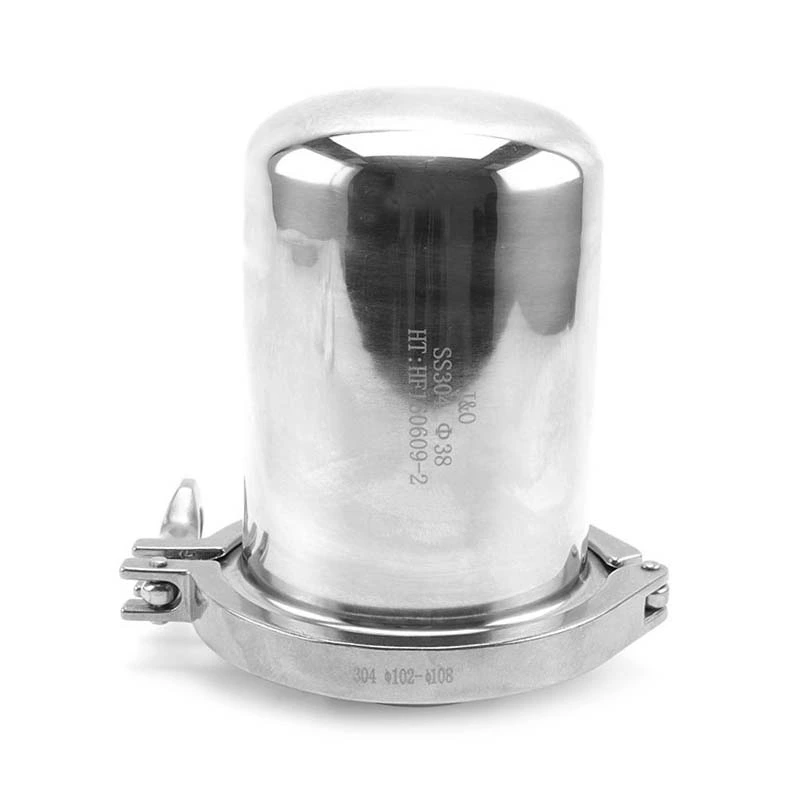Tools Used In The Manufacturing Process Of Sanitary Valves
Sanitary Valve The most important tool in the manufacturing process is the turning tool. There are many types of turning tools, which are divided into many types according to their uses, such as turning tools for external circles, through-hole boring tools, etc. The following table details the classification and uses of turning tools for sanitary valves:
Name
Purpose
45° external cylindrical sanitary valve turning tool
Can turn external circles, end faces and internal and external chamfers, easy to use and highly versatile
70° external cylindrical sanitary valve turning tool
Suitable for turning external circles
90° external cylindrical sanitary valve turning tool
The radial force is small during turning, suitable for turning stepped shafts and slender workpieces
90° external cylindrical sanitary valve turning tool
Used for turning end faces
Cut-off tool
Used to cut off workpieces and cut grooves on parts
Internal grooving tool
Used to cut grooves in inner holes
Wide head precision sanitary valve turning tool
The blade width is relatively wide, and a larger feed rate can be selected during work to obtain a higher surface finish. Used for fine turning or fine turning of external circles
Through hole boring tool
Used for turning general through holes
Blind hole boring tool
Used for turning stepped holes or blind holes
60° external thread sanitary valve turning tool
Used for turning ordinary external threads
60° internal thread turning tool
Used for turning ordinary internal threads
30° external thread turning tool
Used for turning trapezoidal threads
36° V-belt groove turning tool
Used for turning pulley grooves
Flat body forming turning tool
Used for processing various external forming surfaces
Rhombic body forming turning tool
Used for processing various external forming surfaces
Circular forming turning tool
Used for processing various internal and external forming circular surfaces
When selecting machine-clamped indexable inserts, you must first understand the rules for indicating the model of indexable inserts. According to the international standard ISO 1832-1985, the code representation method for indexable inserts is composed of a 10-digit string, which is arranged as follows: In general, the 8th and 9th digit codes are filled in when required. In addition, each company can add some additional symbols and connect them with the ISO code with a hyphen (such as PF for chip breaker groove type). Indexable inserts are used for different processing methods such as turning, milling, drilling, and boring, and the specific content of their codes is slightly different.
Chip breaker groove shape of indexable inserts. In order to meet the comprehensive requirements of chip breaking, smooth chip removal, good processing surface quality, and wear resistance of cutting edges, indexable inserts are made into various chip breaker groove shapes. At present, the groove shape represented in my country's standard GB 2080-87 is a V-shaped chip breaker groove with a groove width of K
There are more than 2,000 common varieties and specifications of machine-clamped indexable CNC tools, and various indexable carbide inserts, ceramic inserts and other material inserts are required to match them. Common types include various milling cutters, hole processing tools, turning tools for sanitary valves, and composite tools (drilling, expansion, boring, countersinking). In order to reduce tool change time and facilitate tool alignment, and to facilitate the standardization of mechanical processing, machine clamp tools and machine clamp blades should be used as much as possible during CNC turning. The common machine clamp indexable sanitary valve turning tool structure for CNC lathes.
(1) Indexable blade code. In terms of tool material application, the tool materials for CNC machine tools are mainly various types of cemented carbides. In terms of tool structure, CNC machine tools mainly use tools with embedded machine clamp indexable blades. Therefore, the use of cemented carbide indexable blades is one of the contents that CNC machine tool operators must understand.
Precautions for sanitary valves when using turning tools:
1. Reliable clamping, accurate positioning, and high precision
2. Smooth chip removal
3. Fast indexing action, shortening tool change time and improving production efficiency
